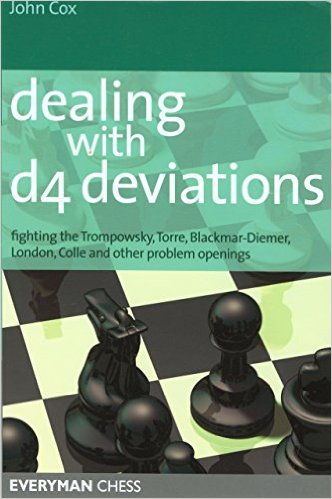INTRODUCTION
Every chess tournament I have participated in has had THAT moment.
THAT moment when after refreshing the pairings in the solitude of your apartment and lamenting about how you got the Black pieces again, you rush to open your Chessbase to quick scan your opponent’s repertoire, only to realize that once again you have to deal with someone who is very stubbornly refusing to cross the 4th rank of the board with his „d4-c3-e3“ offbeat openings rubbish.
And typically, after an unpleasant realisation that your opponent plays chess the way Mourinho’s teams play football, you immediatelly close the Chessbase as quickly as possible („ What the hell, i can equalise as i please “) and as a mental preparation you go rewatch the 2009 Barcelona – Chelsea Championship League match, to remind yourself that there is indeed some higher justice (thank you mr. Tom Henning Øvrebø).
Naturally, some 20 hours later, with the white knight sitting comfortably on e5, your light squared bishop sitting desperately on b7 or c8, being as relevant to the course of the game as Shaquille O’Neal on the free throw line, and your king facing impeding mating threats, you bitterly start regretting that decision as you experience the inevitable oncoming wave of depression typical when faced with a losing position. Of course, you still resign the game with dignity and thank the opponent for the learning experience, because everyone knows that chessplayers are famous for handling bad results very well, right?
If you don’t believe me, ask mr. Sokolov:
Okay… on the bright side you HAVE watched the Barcelona – Chelsea Championship League match last night, so people in neighbouring rooms won’t be surprised when they hear a sudden „It’s a fucking disgrace“ roars coming from your apartment in the evening after the round.
If you bear even slight resemblance to anything written above (and I admit that I might have SLIGHTLY… VERY SLIGHTLY exaggerated things), then it might be time to do something about it and start learning a few useful lines. And if you don’t even have the slightest idea where to start from, then you might consider John Cox’s book Dealing with the d4 deviations as a starting point for studying such offbeat openings.
BASIC AUTHOR INFORMATION
John Cox (if you laughed while reading his surname, then there might be something wrong with you. If you had to pronounce it loudly again to understand that joke, then there is definitely something wrong with you) is an International Master from England, but more importantly also an acknowledged chess author and publicist, who has not only written a handful of chess books, but has also regulary contributed to the New in Chess yearbooks. Going through his bibliography, you can notice that he is sort of an opening specialist, and that most of his books are trying to be as much beginner – friendly as possible.
GENERAL IMPRESSION
When I receive a new chess book in hands, there are several criteria that are important. But first of all, I like to evaluate is whether the book is readable without using the board or computer.
There are several reasons for this. The most obvious one is time and energy saving, since it is much easier to lay oneself into bed and open the book without setting the board or turnin on the computer.
And the possibility of reading without board has the extra benefit that you can read in any place you want like bus, train… or toilette
Yes my friends who are reading this, that book I lent you you has probably been there as well.

And from chess viewpoint I think this is a very healthy exercise, since going through all the variations in your head improves your visualization and calculating ability.. at least in theory.
I think that this is the department in which Cox’s book excels. The number of diagrams per pages is more than enough. A mere almost – 2200 patzer like me is able to follow most of the variations without much problems. The number and length of the variations, which is not too deep (see next section below where this is elaborated in greater detail) allows the reader to follow the material easily.
Another very strong point of this book is that feeling when I open the chess book at random page and dive deeply into the content of that very page without having to scroll backwards to understand what is the author exactly writing about. Therefore for me there is absolutely no doubt that generally I was very impressed with this. In that department it deserves maximum of five stars.
GENERAL IMPRESSION MARK ★★★★★
CHESS CONTENT
The book Dealing with the d4 deviations is divided into ten chapters, and is more or less covering or mentioning almost any kind of SHENENIGAN White player might try to throw at you. The chapters cover the broad spectre of subjects :
- The Trompovsky attack – 1 d4 Nf6 2 Bg5
- The Pseudo Trompovsky – 1 d4 d5 2 Bg5
- The Torre Attack – 1 d4 Nf6 2 Nf3 e6 3 Bg5 and 1 d4 d5 2 Nf3 Nf6 3 Bg5
- The Hebden Torre – 1 d4 Nf6 2 Nf3 e6 3 c3
- The London System – 1 d4 Nf6 2 Nf3 e6 3 Bf4 and 1 d4 d5 2 Nf3 Nf6 3Bf4
- The Colle System – 1 d4 Nf6 2 Nf3 e6 3 e3 and 1 d4 d5 2 Nf3 e6 3 e3
- The Veresov – 1 d4 Nf6 2 Nc3 d5 3 Bg5
- The Blackmar – Diemer Gambit 1 d4 d5 2 e4 and 1 d4 Nf6 2 Nc3 d5 3 e4
- Anti – Benoni Lines – 1 d4 Nf6 2 c4 e6 3 Nf3 c5
- Rare Lines – 1 d4 Nf6 2 c4 e6 3 Bg5, 1 d4 Nf6 2 Nf3 e6 3 g3 and other
What I specifically like about this book is the fact that the author pays equal amount of attention to Black’s two main replies to d4, namely 1… d5 and 1… Nf6. Also the fact that there is an single chapter devoted exclusively to Benoni players ensures that the book is suited for players with different repertoire preferences.
The downside is the fact that the move g6 by Black was not mentioned at any point of the book, so Grünfeld and King’s Indian players ( and also the fanatics like me who like to play the Modern defence) have to learn some of the lines mentioned in the book or consider a repertoire outside of the scope of this book. Of course, this statement doesn’t mean that the book is completely useless since White Trompovsky players don’t give a damn about Black’s second move.

The fact that everything is so strictly divided also has the aditional benefit that it is not neccessary to read every single chapter to be absolutely prepared for every possible White reaction (as is often case with other, more specific opening repertoire books).
For instance, if you are exlusively a Queen’s gambit player, then there is virtually no need for you to read the Trompovsky attack chapter, because there is practically no chance that any single line from the given chapter will ever appear in one of your over-the-board games.
Naturally, when considering such a variety of offbeat openings and possible White move orders which are often characterized with a number of similar moves, transpositions are inevitable.
I think that it is precisely in this department where Cox excels. He often takes a moment to consider a multitude of possible White replies very early in the game, eliminating the eternal „But what if White plays this on move 2 or 3?“ question that has often accompanied me while reading some other opening books.
Cox also makes it very clear which chapter you should consult when a transposition occurs and also how to avoid play being transfered to variations not considered in the scope of the book, by different subtleties and move orders by White.
Every single chapter contains a number of recommended and analyzed variations chosen by the author to combat a specific opening. The number of the variations is limited. At most points of the book there is only a single line recommended.
This minimalistic approach might not appeal to everybody. I think that some players rated much above my rating (and even those not that high above) might find this aspect of the book somewhat lacking.
Because it doesn’t ensure enough flexibility in the opening required for playing in 2300+ rating group (where one often wants to have the possibility of „serving from the other side“ in order to keep the opponent guessing and avoid his preparation).

This minimalistic approach is also apparent while considering the length and the depth of analysis. Most of the time Cox doesn’t bother to consider every possible White continuation at every possible move at the later stages of the game (around move ten), but sticks to the most sensible and most common choices, and tries to explain the basic plans and ideas in the position.
I think that such an approach is great in the computer era, because vast majority of chess books, especially ones about the opening, merely reproduce the engine analysis and evaluations, leaving the reader guessing about why a certain move was played in the certain position, or what is the idea behind a specific move order, or so on…
In other words, Cox doesn’t try to refute every possible faulty plan that White might choose, but rather tries to arm the reader with knowledge and understanding of the position, so that he is capable of refuting the plan himself over the board.
I would like to emphasize here that learning ideas along with the variations is very important in the development of a chess player. Very often lower rated players who rely too much on the computer (me included) have the tendency to learn the first ten moves of the fashionable opening line untill they reach the position where their pet Rybka shows the eternal +0.00 evaluation.
The problem is that usually after reproducing the engine moves they find themselves in the position they are unfamiliar with and tend to stray and succumb in the seemingly innocuous position (especially if they are playing against a stronger opponent).
I think that reading books (or working with a very good chess trainer, which is unfortunately more expensive approach) can help a player overcome the moment in the game where they have equalised comfortably, but when they start asking themsleves the question „Okay, but what should I do now?“
Of course, the things written above don’t mean that the book is totally ignoring the analitical side of the game. When neccessary, Cox doesn’t hesitate to enter somewhat lenghty theoretical discussions, and at various points of the introduces some novelties and rare continuations.
Those novelties can become dangerous weapons in the reader’s opening repertoire. However, such lengthy lines are considered strictly when neccessary. I think that Cox did a wonderful job with balancing the very thin line between lengthy and boring and short and scarce analysis.
Naturally, as almost in every chess book I have read so far, analytical errors are existent. One shouldn’t blindly follow everything that is written in the book.
If you intend to employ a certain line in one of your own games, you should definitely do your homework with double checking the lines with the modern computer (bear in mind that the book dates way back to 2005). Aditionally, certain evaluations of the positions can be considered overly optimistic, which is again customary for repertoire books written exclusively for White or Black side, when author is somewhat stubbornly trying to defend his recommendations and work he has done on a specific line.
To get the better idea about how large those errors are, consider the following oversight by Cox in the currently fashionable line of the London System. I will also copy Cox’s original annotations so you can get the idea about the approach he used in the book in general.
The other very big problem of the book would definitely have to be lack of some very sharp lines, sufficient to play for the win. Most of the time Cox is content with Black merely equalising and reaching rather dull and quiet positions where he has no problems. This is fine when you are playing someone much higher rated then you, but winning from Black position against lower rated oposition represents a rather tedious task, especially for players who don’t fare well in very technical positions (I will ignore the fact that complete chess player should play all positions well since i think that becomes more relevant as player progresses toward IM and GM level).
Naturally, such course of the play is something that White very much wants to dictate with his offbeat openings, and Black’s hands are tied to a certain extent, but I think one or two variations where Black risks a little more and plays for a win would give the book that final touch.
To conclude this section, I think that although subjectively I would like to give this book a greater mark since this book DID help me alot, objectively because of somewhat „old“ analysis and some analytical holes I can’t give it more then 3 marks.
CHESS CONTENT MARK ★★★
CONCLUSION
Although there are some people (typically of older generation) who will be quick to point out that, in contrast to the past when most prominent chess book authors were almost exclusevily top GMs of the world, nowadays even an „ordinary IM“ dares to write a book.
I think that with Dealing with the d4 deviations Cox continues to battle that prejucide succesfully. His easy-to-read writing style, logical thought flow and great balancing between too little and too much makes Dealing with the d4 deviations a very enjoyable and profitable read, especially if you are regularly experiencing trouble against any of the lines mentioned in the book.
You have to bear in mind that Cox intends that everyone can understand and follow everything he writes, so if you are a higher rated player with preference for more theoretical and lenghty analytical lines, you should probably prefer something else.
However, merely the fact that a strong IM was convinced that there is a niche for such repertoire opening book against offbeat openings, proves that even in a higher rating groups there are titled players who experience the similar emotions and problems as us untitled pariahs.
And it seems to me that the fact that current top players employ the London System on a more or less regular basis proves that it is possible to set some problems on the highest level. There is alot of references in the modern chess games from which one can learn without consulting this book.
Nevertheless, not everyone has the time or will to continually follow top level games. Therefore, I think this book is a great starting point for many players.
FINAL MARK ★★★★
Now if you will excuse me, there is a certain Andres Iniesta shot I would like to rewatch.


I bought this book only yesterday for a just-in-time preparation for a game today. I had read your review, but thought nonetheless that the book would be a good choice, having enjoyed (and still enjoying) John Cox’ “Starting out: 1.d4”. I felt well prepared for the London Nbd2 line — until I fell into the 10.Nxd7 hole, because I was thinking John Cox would have warned me if there was any danger, and I knew about the other bishop sacrifice line. Well, he didn’t, as you knew. And as I should have known, had I only read your review more carefully, but what were the chances that the one analytical hole you show is the one I come across? (interestingly, many years ago in London, someone talked about a hole in the pavement in some area — I had stepped into that hole the same day, and that’s a true story). So, thanks for the review, and may your warning be heard.
PS: Are there other holes in the analysis? Perhaps it’s the only one, and I can continue to trust this book. Here’s to hope.
PPS: I played 15…Qc4 and 16…Rfd8.
Hi Marc,
I am glad you liked my review, and feel sorry that you fell for the well known trap. Hope it was not a serious tournament game. Did you lose in the end?
To be completely honest, I haven’t rechecked every single line Cox has given, but I guess it makes sense to do so.
Because the book is somewhat old, and some systems such as London system have really been popular in the course of last couple of years.
With best regards
Vjekoslav
Hi Vjekoslav,
Thank you for your sympathy. I lost in the end (although it wasn’t easy for my opponent), and it was a tournament game, but that’s ok — I’m just a medium-level amateur (1749 Elo at the moment), and my opponent was much higher rated anyway (more than 300 Elo difference), so not a terrible loss overall.
It would be very useful if John Cox made an update to his book. It fills an important gap.
All the best
Marc
Hi Marc,
No problem, it happened to us all. I actually fell for the same trap, although it was only in an online blitz games, I know how it feels 😀
Yes, there is definitely a gap in chess literature regarding offbeat d4 systems. I am not aware of any books published recently, which is a shame, considering that their theory has advanced rapidly in the last couple of years.
In any case, games such as these are a good lesson that you shouldn’t always follow the analysis blindly 🙂
With best regards
Vjekoslav